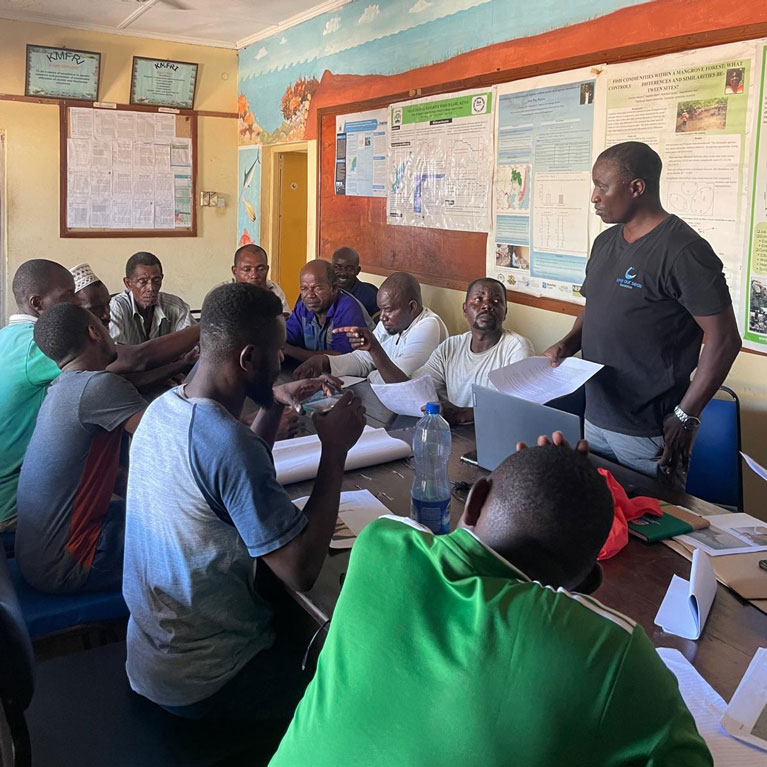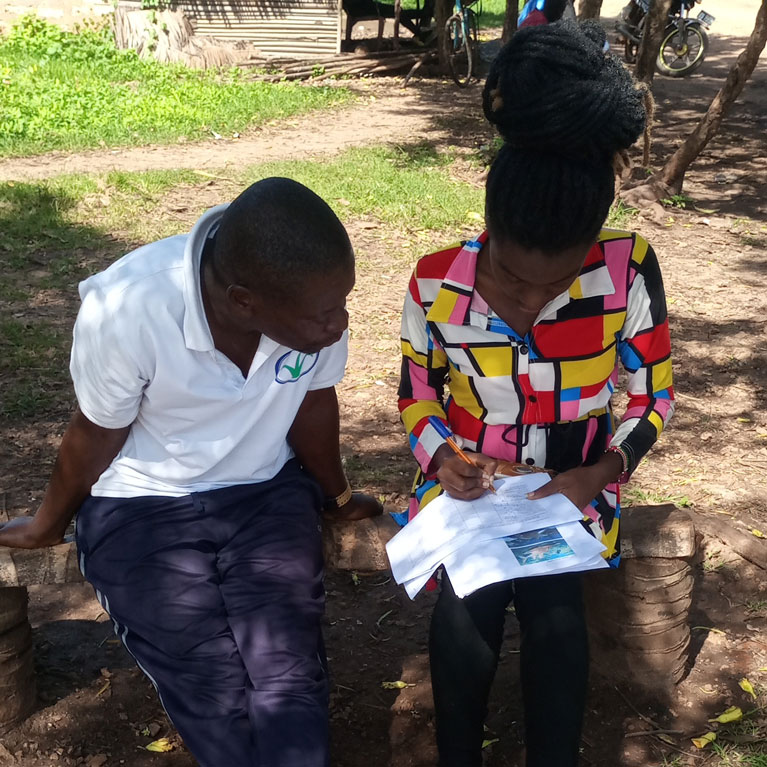Connecting local fishers, their histories and the halavi guitarfish
Victor is engaging with local Kenyan fishers to map out the historical occurrence and abundance of the Critically Endangered halavi guitarfish. Overfishing has led to a steep decline in the number of this guitarfish, and the sustainable management of its surviving populations is vital for its conservation. Victor will combine interviews that help him glean local knowledge to chart guitarfish population changes over time in coastal Kenya with meetings to promote his findings and advocate for the vulnerability of the halavi guitarfish.
I grew up in western Kenya about 30 kilometres (18 miles) from Lake Victoria. While growing up, I used to accompany fellow kids to fish near our rural home in one of the major rivers that drains into the lake. Over time, human encroachment and agricultural activities along the riverbank led to the river becoming narrower. This resulted in a reduction in the volume of water draining into the lake and a decline in fish populations. During that time, conservationists had begun to raise awareness countrywide about the need to conserve our river catchments since they were...


Assessing local knowledge on Halavi Guitarfish in Kenya
Our key objective is to reconstruct changes over time in the occurrence and abundance of the halavi guitarfish along Kenya’s coast by making use of the local knowledge held by fishers. We also aim to raise stakeholders’ awareness of this species’ vulnerability.
Overfishing has led to severe population declines and localised disappearances of the halavi guitarfish. By conducting interviews with active and retired fishers, we will make use of their knowledge of the species and its fishery in local waters. We will also carry out awareness-raising and advocacy campaigns among relevant stakeholders to emphasise the vulnerability of the species. The proposed project’s findings will promote evidence-based and sustainable management of the halavi guitarfish fishery.
The halavi guitarfish is among the most threatened species of rays globally. Because of this, it is listed as Critically Endangered on the IUCN Red List of Threatened Species. Yet it is increasingly targeted or caught incidentally in small-scale fisheries. In Kenya, the species occurs in water to depths of about 100 metres (328 feet) and particularly on sandy substrates and in sea-grass meadows. It is threatened due to being increasingly harvested for food and to provide income, resulting in a population decline and even in localised disappearances. However, historical data about the species that can contribute to understanding it and informing evidence-based management are still lacking because catch reports at the beach do not identify rays to species level. Moreover, little is known about this guitarfish’s spatial and temporal distribution, so there are no records of changes in its populations. By conducting interviews and group discussions, we will use fishers’ local knowledge to reconstruct changes in the occurrence and abundance of halavi guitarfish over time in coastal Kenya. We will also meet stakeholders to discuss the project’s findings and raise awareness and advocacy about the species’ vulnerability.
- To determine the temporal and spatial abundance of historically exploited halavi guitarfish in order to identify local extinctions.
- To raise awareness and conservation advocacy to stakeholders regarding the species’ vulnerability to local extinction.

